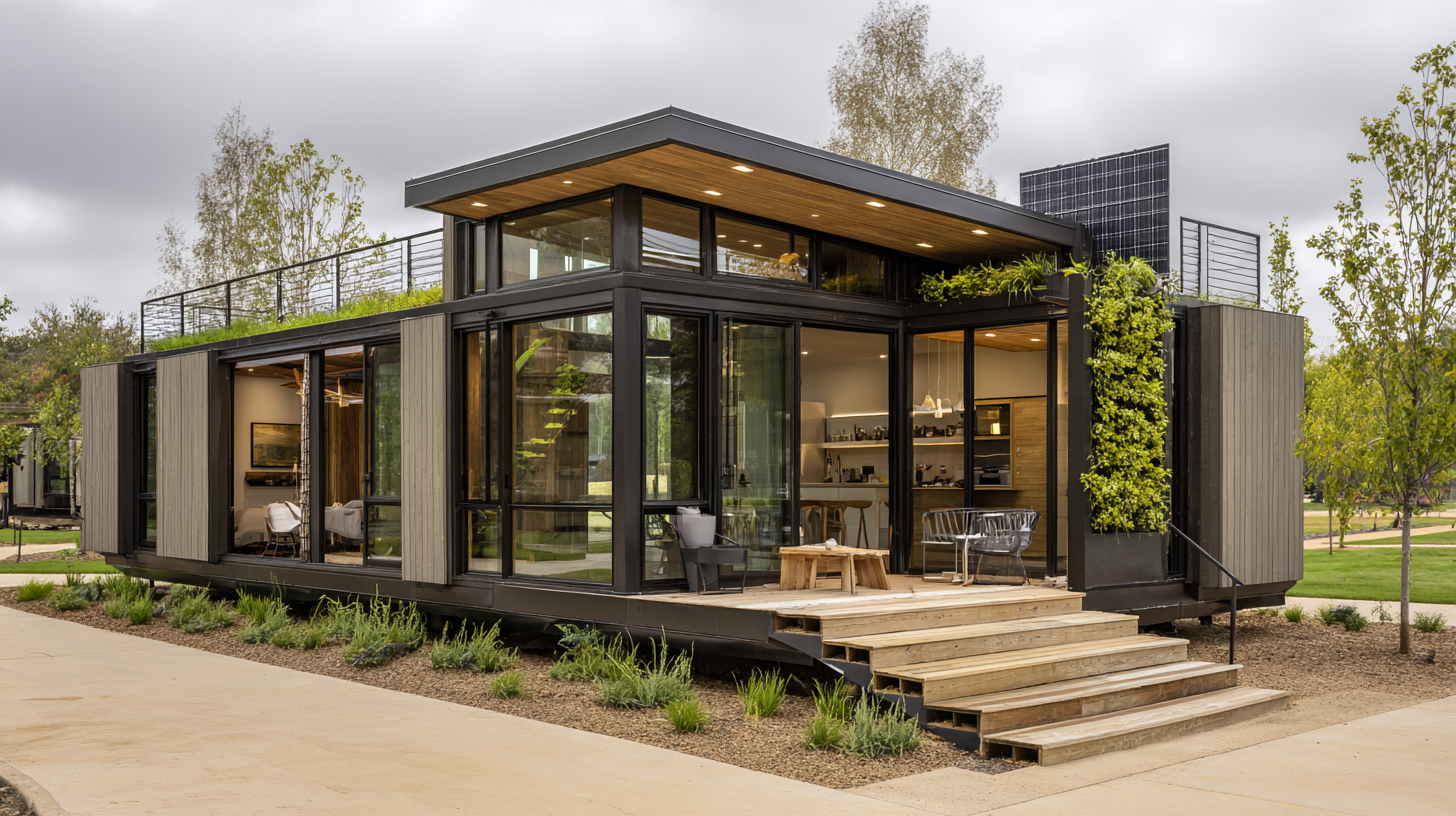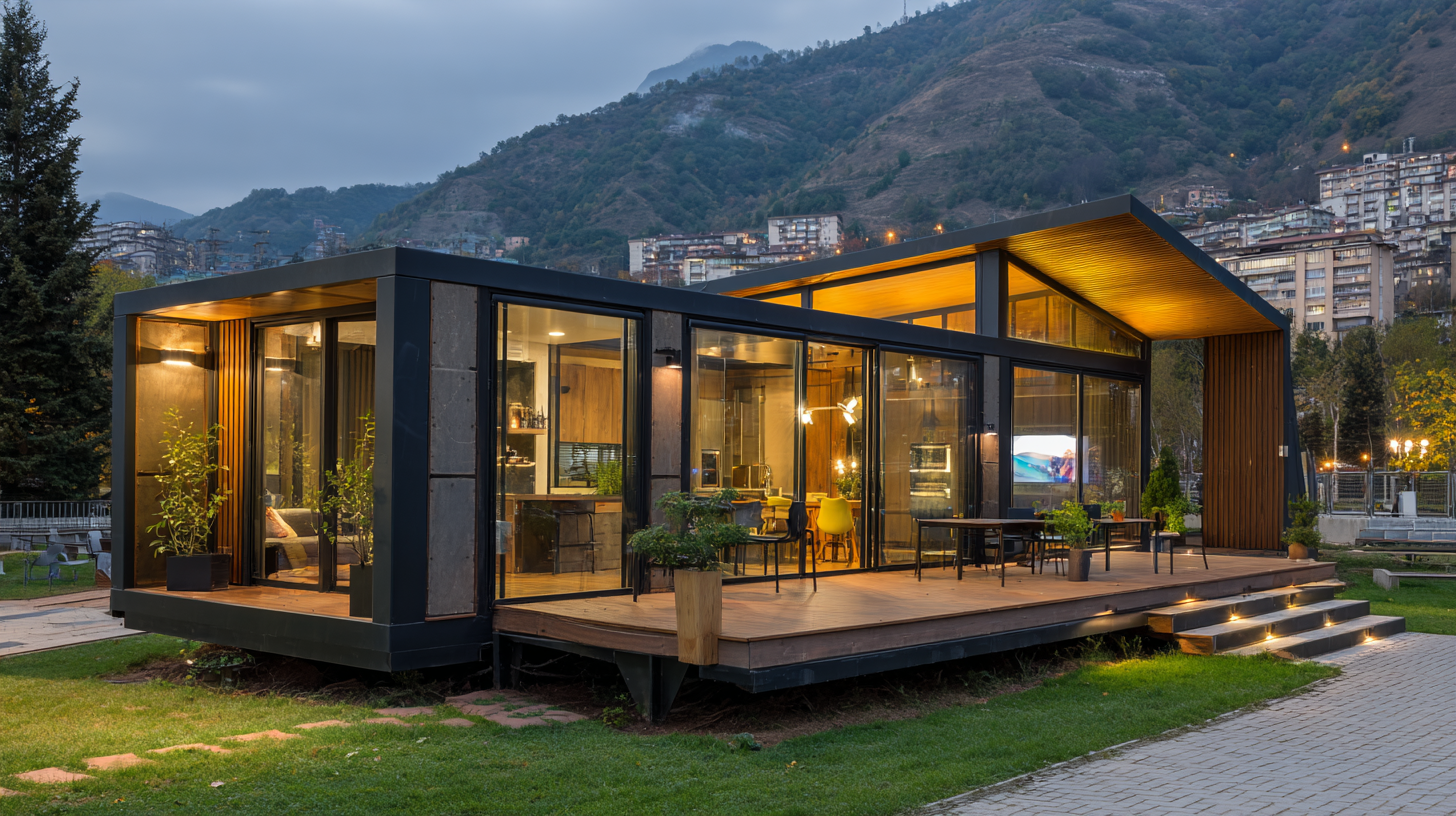Exploring the Future of Modular Houses in Sustainable Living Solutions
As the global demand for sustainable living solutions intensifies, modular houses have emerged as a pivotal innovation within the housing industry. A report by Grand View Research indicates that the global modular construction market is projected to reach USD 157.2 billion by 2025, driven by the increasing necessity for efficient, cost-effective building methods and sustainable materials. Modular houses, distinguished by their prefabricated sections, significantly minimize waste and construction time, aligning with the principles of sustainable development. Moreover, the U.S. Green Building Council highlights that modular homes can utilize approximately 90% less waste than traditional building methods, proving to be not only environmentally friendly but also economically viable. As we explore the future of modular houses in sustainable living solutions, it becomes evident that they represent a transformative approach to addressing housing shortages while prioritizing ecological responsibility.

The Necessity of Modular Housing in Modern Sustainable Living
The necessity of modular housing in modern sustainable living is becoming increasingly evident as cities grapple with rising housing costs and environmental concerns. Prefabricated homes, once seen as a temporary solution, are evolving into stylish, eco-friendly alternatives that address both affordability and sustainability. With innovations in design and technology, modern modular homes can be carbon-negative, demonstrating that living spaces can be both functional and environmentally conscious. This transformation aligns with research indicating that implementing modern methods of construction can provide substantial economic benefits, as highlighted by a recent sustainability assessment in Saudi Arabia using the Global Trade Analysis Project model.
As the demand for housing solutions continues to grow, modular homes offer a flexible approach to sustainable living. Eco modular homes not only allow for lower environmental impact but also cater to the rising need for affordable housing solutions. Reports indicate that about one billion people worldwide reside in inadequate living conditions, underscoring the urgency for investment in affordable housing. By integrating sustainable practices into modular designs, we can create harmonious living environments that support both individual needs and the planet's health.
Innovative Design Elements in Modular Homes for Eco-Friendly Housing
 The rise of modular homes is reshaping the narrative of sustainable living through innovative design elements that emphasize eco-friendliness. One of the most exciting features of contemporary modular designs is the integration of sustainable materials. Builders are increasingly opting for recycled or reclaimed materials, which not only reduce the ecological footprint but also enhance the aesthetic appeal of the homes. For instance, using bamboo flooring or reclaimed wood walls can offer both durability and a unique character, all while promoting environmental responsibility.
The rise of modular homes is reshaping the narrative of sustainable living through innovative design elements that emphasize eco-friendliness. One of the most exciting features of contemporary modular designs is the integration of sustainable materials. Builders are increasingly opting for recycled or reclaimed materials, which not only reduce the ecological footprint but also enhance the aesthetic appeal of the homes. For instance, using bamboo flooring or reclaimed wood walls can offer both durability and a unique character, all while promoting environmental responsibility.
Moreover, energy efficiency is at the forefront of modular home innovations. Many designs incorporate advanced insulation techniques and energy-efficient windows, which significantly lower heating and cooling costs. Solar panels and green roofs are becoming common elements in modular homes, allowing residents to generate their own energy and manage water runoff effectively. The modular approach also facilitates the incorporation of smart home technology, enabling homeowners to monitor and adjust energy consumption in real-time. These design elements collectively create a holistic approach to sustainable living that is both functional and aesthetically pleasing, setting a new standard for future housing solutions.
Economic Benefits of Modular Houses in Sustainable Development
The economic benefits of modular houses in sustainable development are becoming increasingly significant as communities seek efficient and eco-friendly living solutions. Modular homes, constructed in a factory setting and then assembled on-site, can drastically reduce construction time and labor costs. This efficiency leads to lower overall expenditures for builders and homeowners alike, making sustainable housing more accessible to a broader audience.
Additionally, modular houses often utilize sustainable materials and energy-efficient technologies, further enhancing their cost-effectiveness over time. By reducing energy consumption and utilizing renewable resources, homeowners can experience substantial savings on utility bills. Furthermore, as regulatory bodies promote sustainable building practices, modular construction gains favorable financing options and tax incentives, which can further bolster the economic viability of investing in such homes. As awareness of environmental challenges increases, the adoption of modular housing solutions presents a financially beneficial strategy for individuals and communities committed to sustainable living.
Community Impact: Modular Housing’s Role in Urban Redevelopment
Modular housing is increasingly being recognized for its potential to play a significant role in urban redevelopment, particularly in areas facing economic challenges. As cities struggle with housing shortages and rising costs, modular homes offer a flexible and efficient solution that can be rapidly deployed. These innovative structures not only reduce construction waste but can also be tailored to meet the specific needs of diverse communities, fostering inclusive environments where people from various backgrounds can live and thrive together.
**Tips:** When considering modular housing for your community, engage local stakeholders early in the process to ensure that their needs and preferences shape the design. Creating a participatory planning approach can enhance community buy-in and ensure that the new developments reflect the character and desires of the neighborhood.
Moreover, modular housing can revitalize underutilized urban spaces, turning vacant lots or derelict buildings into vibrant communities. By integrating green spaces and communal areas, modular developments can encourage social interaction and promote collective well-being, leading to positive social impacts in the city.
**Tips:** Incorporate eco-friendly materials and sustainable technologies in modular designs to amplify the environmental benefits. By prioritizing sustainability, communities can not only reduce their carbon footprint but also educate residents about the importance of eco-conscious living.
Exploring the Future of Modular Houses in Sustainable Living Solutions
This bar chart illustrates the potential impact of modular housing on urban redevelopment over five key dimensions: affordability, environmental sustainability, construction speed, community acceptance, and space efficiency. These factors are crucial in assessing how modular housing can contribute to effective and sustainable living solutions in urban areas.
Future Technologies Driving the Evolution of Modular Home Construction
The modular construction market is poised for substantial growth, anticipated to reach USD xxxx billion by 2025 and expand to USD xxxx billion by 2033, with a compound annual growth rate of xx%. This evolution is primarily driven by advancements in technology, which enable a more efficient and sustainable approach to building homes. Innovations in modular housing not only promise faster construction times but also allow for the integration of smart technologies that enhance livability and energy efficiency.
Emerging technologies are reshaping the modular housing landscape, leading to a shift from traditional construction methods to an industrialized, smart living paradigm. Recent exhibitions have showcased how these advancements can converge across several dimensions – including design, materials, and construction practices – to create homes that meet the evolving needs of society. As the focus shifts towards sustainable living solutions, the adoption of modular construction is likely to play a critical role in urban development, making housing more accessible and environmentally responsible.

